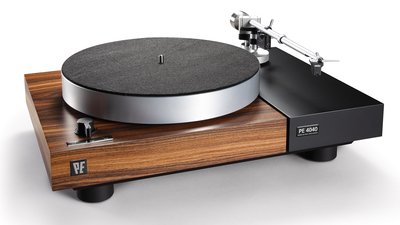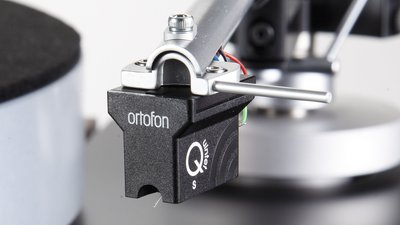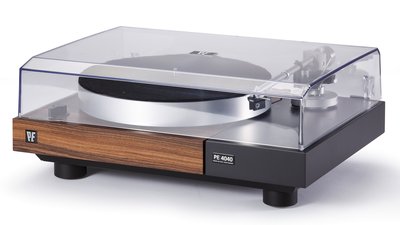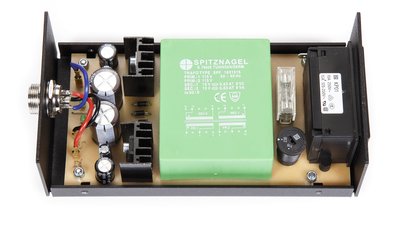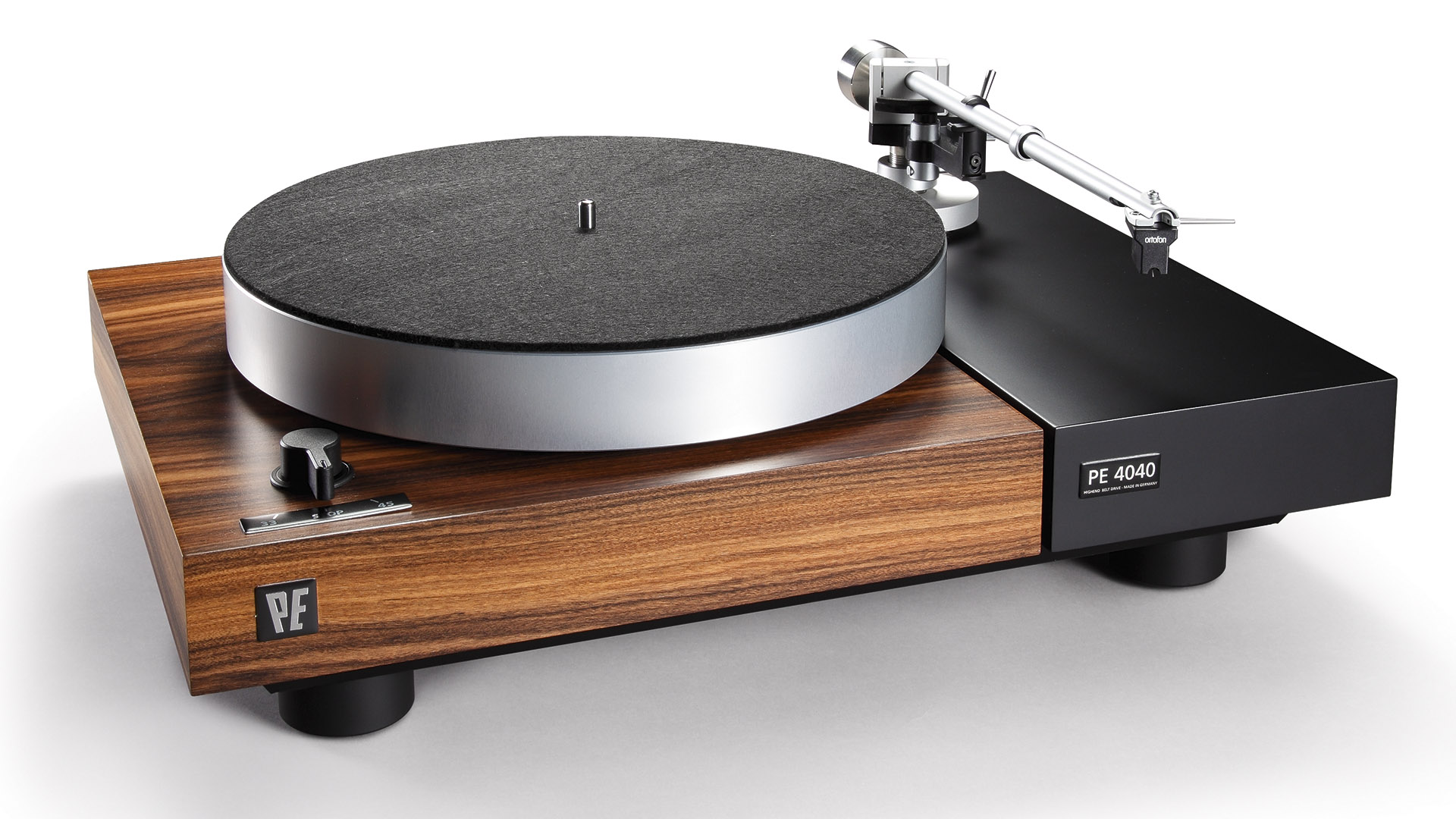
Turntable Test
Perpetuum Ebner PE4040 MKII Review
»Swing When You‘re Winning« – Perpetuum Ebner has upgraded its top turntable PE4040 to the MKII version. Its suspended chassis remained, but additionally it got a few great gifts as well as a practical detail, which we had missed before.
It was and still is the pride and joy of Wolfgang Epting, who in 2015 revived Perpetuum Ebner, the formerly worldwide renown brand of German turntable construction. Since then he presented some models which are built in the Black Forest under the traditional name, starting from 800 Euro and reaching up to the 4500 Euro of the new PE4040MKII.
Latter quotes the historical models with its optical division of the case, whereby the right, narrow area is typically kept in black (high gloss or silk matt), while the left one appears varnished (b/w/rt) or veneered. Also just like the classic models, the current double-digit models, including the PE4040, have a spring-mounted subchassis for the turntable and tonearm to protect them from shocks and isolate them acoustically. Of course, this also protects against vibrations from the motor, which is of course additionally decoupled at the fixing points in the form of small rubber rings. The motor is a synchronous type from a local quality supplier that was introduced in the course of model maintenance.
Finally with "Speed Control"
Since the three coil springs of the subchassis have been damped mainly with regard to their horizontal mobility, it does not appear to be overly soft but rather tightly guided. Thus, the manufacturer aims at a controlled response that prevents tumbling and swinging. In fact that seems to have worked, as it never happened to us. Nevertheless, despite the decoupling of the inner chassis, the PE4040 MKII should still be placed on a stable, low-vibration surface, on which it can be quickly aligned thanks to its three height-adjustable feet.
A further innovation is the external power supply which includes the control electronics for the motor. On the old PE4040 it was directly integrated in the turntable. Perpetuum Ebner expects even greater precision and lower interference from the outsourcing.
In the course of the revision, the MKII finally got a fine speed adjustment, which is separately designed for both speeds by means of a small potentiometer on the back of the device. For example, by placing a stroboscopic disc on the unit, the speed can be adjusted easily and precisely. Afterwards it is sufficient to check the settings of the "Speed Control" from time to time and correct them if necessary.
The 500 Euros surcharge in contrast to the predecessor does not only include the new motor and the separate power supply. Like most other suppliers, the Swabians follow the package-philosophy and therefore equip their PE4040MKII with a pickup, which of course fits perfectly to the Thorens TP92 tonearm, which is selectively damped on the tube.
One cannot say that the Swabians were being stingy in this regard, as with the "top" of Ortofon's "MC Quintet" series – the Black S – they did not make any compromises. The stylus is equipped with a hard, stiff sapphire needle carrier, the tip of which carries a diamond with an elaborate "Shibata" cut and moves little coils of gold-plated, high-purity "Aucurum" copper wire. It is one of the highlights of its price class and costs 830 euros solo. Its signals are connected to a pair of Cinch sockets or – for the fully balanced operation possible with MCs – XLR sockets.
The assembly of the PE4040MKII was simple, not least because the pickup was already meticulously pre-adjusted. Since the counterweight of the tonearm has no scale, an adjustment aid in the form of an electronic scale is required to adjust the tracking force – we chose 22 millinewtons. The antiskating is done magnetically. The only thing that could get tricky is if the screws accessible from below for the independently mounted subchassis would need to be turned. In our case, this was superfluous, since the subchassis was perfectly horizontal exactly when the outer cabinet was in the same position.
In the Swing of Things
Now the first record was placed onto the felt mat of the 3.5 kilogram and impressive 37 millimeter high platter, which rests on a belt-driven sub platter. On its inner side it was – just like the aluminum sub chassis or frame – covered with a resonance damping bitumen layer.
With her famous not just among audiophiles album "Live in Paris" Diana Krall had the honor of inaugurate the PE. The listening test only had one unknown parameter, i.e. the drive and arm, because we were very familiar with Ortofon's first-class Quintet Black S from previous use of it. The PE4040MKII presented itself from the first note as ambitious as it was sovereign, in that it rendered the stormy entrance title brightly awake, but never rushed. Leaned back calmly, it expertly arranged all parts of the sound image with nimble fingers.
Following our positive experiences with the successful debutant PE1010 and the upgraded PE2525, the big Perpetuum Ebner is undoubtedly entitled to the crown. It managed to listen far into the background of the Paris olympics stadium and caught some fleeting details that one hardly thought to have ever heard before.
Be that as it may, its performances were characterized by distinct audibility, without a hint of analytical character. Instead it sounded homogeneous and showed the kind of finesse in timing and fine dynamics that has always been ascribed to subchassis model by their unbreakable fan community. You suddenly find yourself in the relaxed pulsating "swing of things" – but only if the mains polarity is correct (see diagram). Otherwise the before in its width perfectly filled spectrum shifts itself more towards the speakers, the energy slips somewhat into the upper mids, thus leaving a rather unnatural image. So watch out! It would be a shame to ruin such a splendid turntable by such carelessness!
The new PE4040MKII is one of those components that you will grow to love more and more the longer you listen to it. From the firm, full bass to the smooth mids to the delicately spotted trebles, which appear with opaque sparkle against a velvety black background, the Perpetuum Ebner masters its scale effortlessly and sounds as noble, dignified and high-class as it appears in the rosewood veneer of the test device.
If one manages to stop listening to it at some point, one realizes that the PE is not expensive for the bid and a gain for the analog scene. And it's got the swing anyway!
Verdict
A brilliant record player. If the macassar finish of our test device is too "dignified" for you, the PE4040 MK II is also available in other veneers or paint finishes. In terms of workmanship and sound, it always meets the expectations we have at this price point. By improving various parts, outsourcing the power supply and choosing the first-class MC-scanner, Perpetuum Ebner lifted their top turntable to a new level. In terms of sound, it impresses with a high degree of audiophile virtues including pronounced homogeneity and spaciousness as well as a gracious shot of analogue sensuality.
Technical Details
Turntable
Perpetuum Ebner PE 4040 MK II
Price: ca. 4750 € (Last check: 27.10.2022)
Dimensions WxHxD: 47 x 17 x 34 cm
Weight: 17 kg
Warranty: 2 years
Manufacturer: WE Audio Systems

General Data
Measurement Results
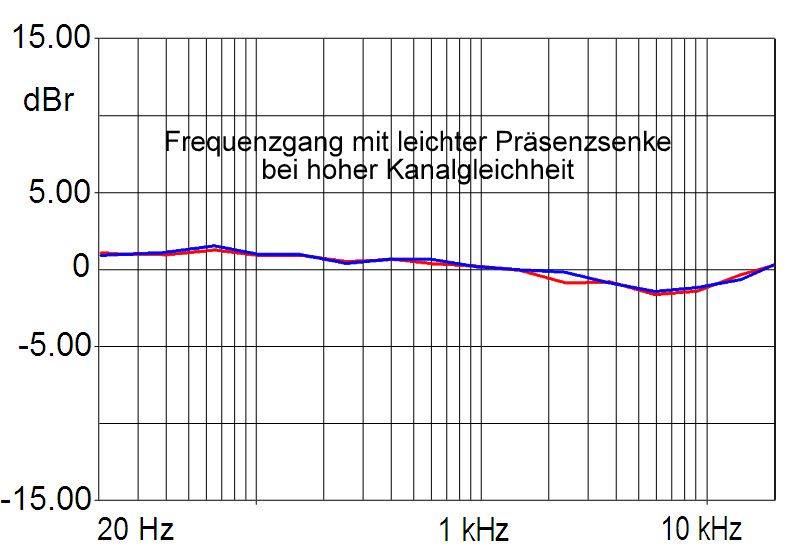
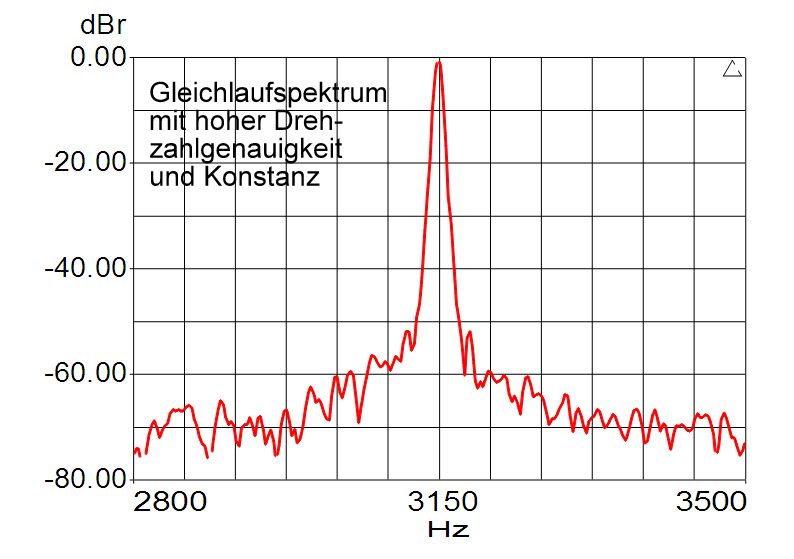
Measurement Values
| Pickup type: | MC |
| Output voltage (1 kHz, 5 cm/sec): | 0.35 mV |
| Recommended contact force: | 22 mN |
Stereo Test
Sound Level Turntable: 85%
Price/Performance
External power supply, output in Cinch- and XLR, feet and tonearm height adjustable, speed fine adjustment for 33 and 45 separate
What we've heard
Diana Krall – Live in Paris: This double LP from the ORG label offers maximum musicality and sound, including a thrilling live atmosphere.
Diana Ross & The Supremes – Join The Temptations: When in 1968 two of the best and most successful vocal groups joined forces with top musicians, this fascinating album was created.
 MAGAZINE
MAGAZINE